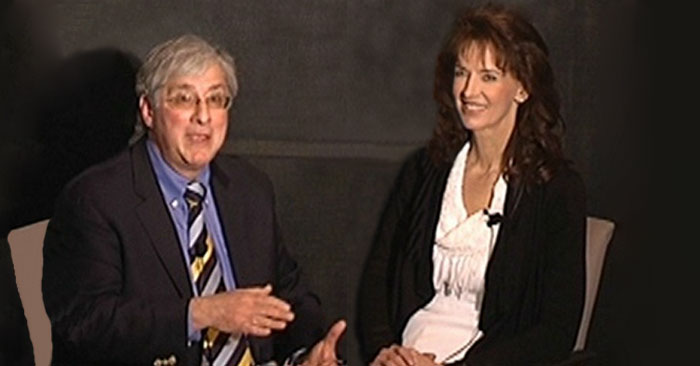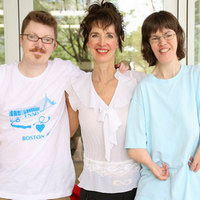
Why do news stations show a lot of human interest stories? Have you felt inspired when you’ve watched them? Human interest stories teach me how other people are overcoming challenges in their lives and I also learn about myself. It’s possible that we can all learn something positive from these kinds of stories.
When the features involve groundbreaking medical research that changes lives, you can find out how modern medicine might alter your life or that of a person you know. In the following story, you can learn how gene sequencing changed the lives of my family and also gives hope to others!
When scientists asked my daughter and son, Heather and Logan, and I if we wanted to participate in a genetic study to have our genes sequenced we enthusiastically responded with, yes! We hoped to find answers as to why both of my children have a rare disease called Miller syndrome.
In 2010, scientists sequenced my families entire whole genomes, which means they sequenced all our genes. As a result, this research changed our lives.
Learn How Gene Sequencing Changes the Lives of the First Family Tested
Two Disease-Causing Genes Discovered
When the study was over, scientists gave us our long-awaited answer; a genetically defective gene causes Miller syndrome. When they told me this news, my eyes filled with tears of happiness because living without answers for 33 years was difficult. Having an answer is a huge relieve, even if there isn’t a cure.
In this groundbreaking research, scientists also found the gene responsible for Heather and Logan’s lung condition. We didn’t know why they had this life-threatening disease. They also told us what it is called; primary ciliary dyskinesia, PCD.
Heather described her feelings the best when she said, ‘”Now we know it’s just Mother Nature working things out.” Logan was thrilled to find out he could have children without Miller syndrome or PCD if he ever decides to have kids.
Our lives were changed positively forever because of this study!
Mother is Interviewed about Her Family’s Gene Sequencing Results
I received an invitation to speak to the deans of our nation’s medical schools at their annual conference, along with my husband, Lynn Jorde. He is the department chairman of Human Genetics at the University of Utah.
In the audience at the dean’s conference, was the director of the National Institute of Health, NIH, Francis Collins M.D, P.H.D. Dr. Collins approached me after my talk and invited me to give the cornerstone presentation to 100 medical students at Albert Einstein College of Medicine.
I felt honored to speak. In this memorable grand finale to the Molecular and Cellular Foundations of Medicine course, Dr. Robert Marion interviewed me. We discussed my life of raising two children who have two rare syndromes and also about writing my memoir, Eight Fingers and Eight Toes: Accepting Life’s Challenges.
He also asked me questions about having our genes sequenced and about our reactions to the results of that study. Included here is the video recording of my interview with Dr. Marion.
Video: Capstone Presentation at Einstein, with Dr. Robert Marion and Debbie Jorde
Below is the article summarizing this interview:
Einstein: “Human Face on Cells and Molecules, Article
Learn more.
SL Tribune News: Historical Genetic Discovery Brings Hope
KSL TV News: How Gene Sequencing Changed Lives of First Family Ever Sequenced
Recommended reading.
Know Genetics: What is whole genome sequencing?


